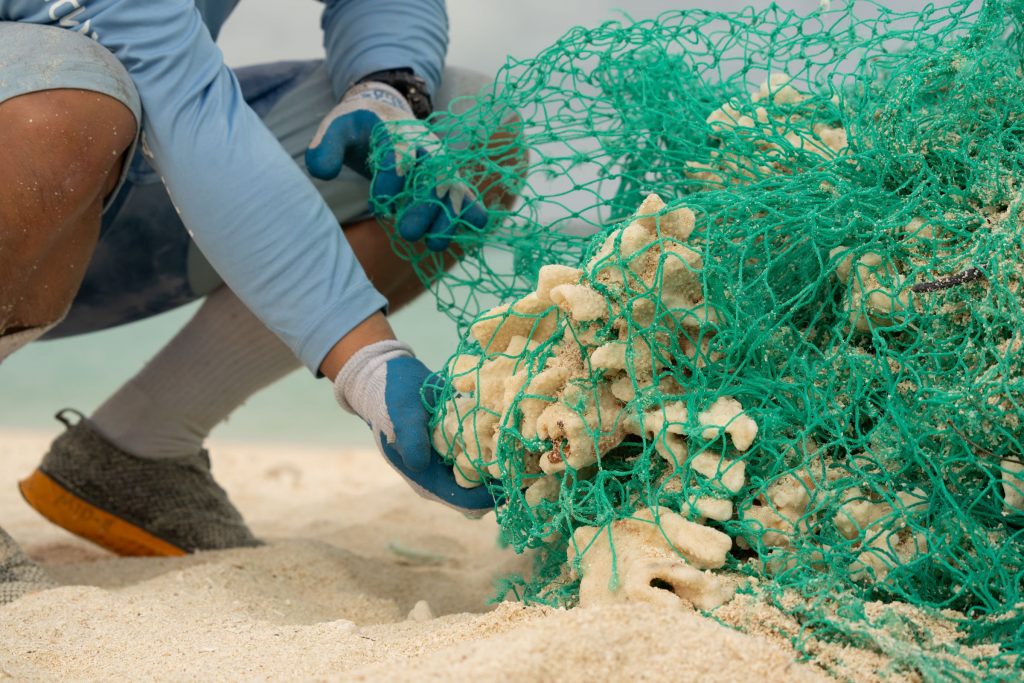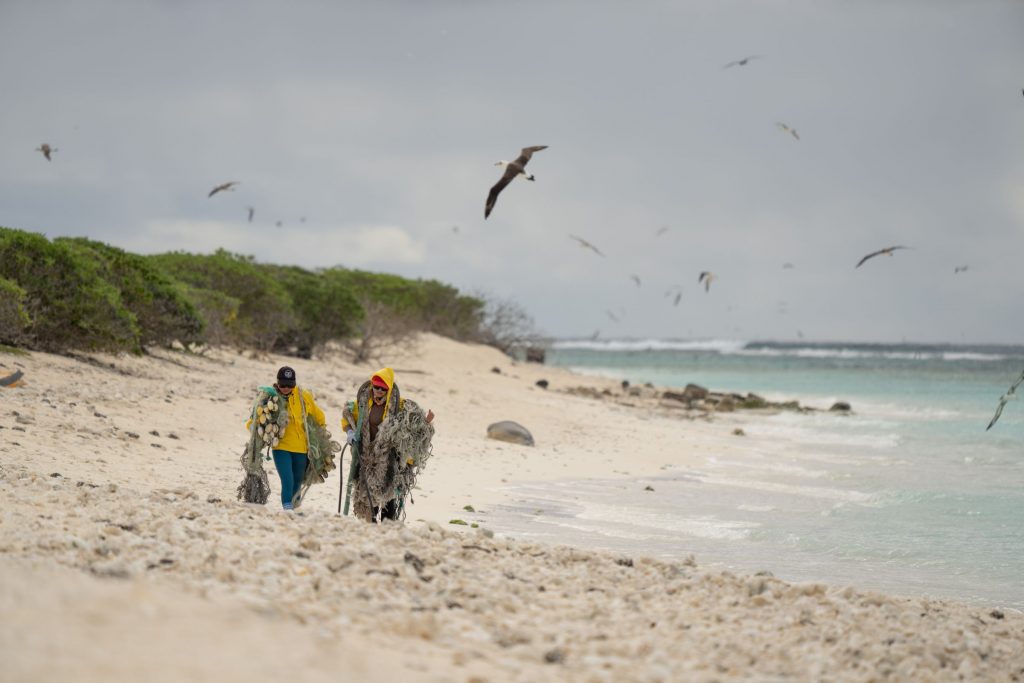Nearly 32 tons of marine debris removed from Kuaihelani, also known as Midway Atoll
Papahānaumokuākea Marine National Monument, comprised of uninhabited islands, atolls and seamounts stretching over 1,200 miles northwest of the main Hawaiian Islands, is home to 14 million seabirds, representing 22 species, and 25% of the marine species found there are endemic, only existing in the Hawaiian Archipelago.

The national monument is also home to tons of marine debris — rubbish littering shorelines and endangering the already threatened wildlife.
A team of 12 marine debris technicians from the Hawaiʻi-based nonprofit Papahānaumokuākea Marine Debris Project removed a total of 70,080 pounds — nearly 32 tons — of marine debris and cleaned up 10.7 miles of shoreline, encompassing 130 acres, from April 15 to May 3 at Kuaihelani, also known as Midway Atoll, within the national monument.
It was the first of three cleanups planned in 2024 for the Northwestern Hawaiian Islands.
“We are so grateful to [the Papahānaumokuākea Marine Debris Project] and their partners for this latest success in removing plastic pollution and other marine debris that threaten our ecosystems and ocean health, and for all they do to protect this place that is sacred to Hawai‘i,” said Marc and Lynne Benioff, private matching donors for the project.
The 19-day mission targeted the removal of entanglement and ingestion hazards to wildlife from the shorelines of Eastern, Spit and Sand Islands within Kuaihelani.
The atoll harbors more than 70 endangered Hawaiian monk seals and also serves as the nesting grounds for the world’s largest colony of mōlī, or Laysan albatross, and nearly 2 million birds of 19 different species, including the world’s most endangered duck, the Laysan duck.

Here is a breakdown of the marine debris removed:
- Derelict fishing nets, also called ghost nets: 35,100 pounds.
- Other plastic marine debris, including derelict fishing gear such as buoys and floats: 32,930 pounds.
- Abandoned derelict vessels: 2,050 pounds.
The nonpfrofit’s team came to the atoll with a goal of cleaning up 35,000 pounds of marine debris.
“Thanks to the great work of [Papahānaumokuākea Marine Debris Project], more than 70,000 pounds of debris has been removed from Papahānaumokuākea, allowing us to protect endangered wildlife, sustain coral reefs and explore new ways to conserve the marine monument going forward,” said U.S. Sen. Brian Schatz, a Hawai‘i Democrat, reflecting on the mission.
U.S. Fish and Wildlife Service Midway Atoll National Wildlife Refuge manager Elaine Johnson said the blitz-style work achieved by the 12-person team was amazing and her organization is proud to partner with the nonprofit to keep Kuaihelani safe for the wildlife that depend on the atoll.
During the past 4 years, Papahānaumokuākea Marine Debris Project has removed more than 785,000 pounds of marine debris from the remote islands and atolls within the national monument.
The nonprofit aims to remove an additional 215,000 pounds later this year during two 30-day, ship-based cleanup missions scheduled for August through October.
The National Oceanic and Atmospheric Administration’s Marine Debris Program, which has supported marine debris removal efforts in the national monument since 2006, is supporting the nonprofit’s work through a 5-year grant to the National Fish and Wildlife Foundation using $5.8 million in funding provided by the Bipartisan Infrastructure Law.
That funding is being matched by the Benioffs for a total investment of $12M through fiscal year 2026.
Additional funding is being provided by the National Oceanic and Atmospheric Administration’s Damage Assessment, Remediation and Restoration Program and the M/V Casitas Trustee Council. Support is also coming from the Pahlmeyer ‘Ohana, McPike-Zima Foundation, the JEM Project, the Bruce G. Geary Foundation, The Hawaiian Islands Trading Company, numerous community donors and in-kind support from the U.S. Fish and Wildlife Service.
“Climate change is upon us, and the hard work being done by the [National Oceanic and Atmospheric Administration’s] Marine Debris Program has been necessitated by human impacts on our oceans,” said Hawai‘i Governor Josh Green. “I was a young lawmaker in 2007 when then-first lady Laura Bush dedicated the Papahānaumokuākea Marine National Monument, and it filled me with hope for the preservation of the 7,000 marine species there, 25% of them, endemic to the Hawaiian Islands.”
For more information about the Papahānaumokuākea Marine Debris Project and how to get involved, visit the nonprofit’s website or follow it on Instagram, Facebook and X, formerly Twitter.
Papahānaumokuākea Marine National Monument in 2010 was designated as the first mixed — natural and cultural — UNESCO World Heritage Site in the United States. For more information about the national monument, click here.





















